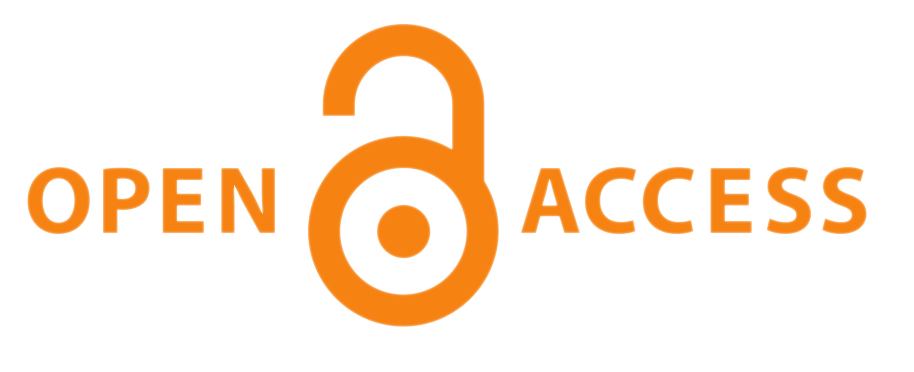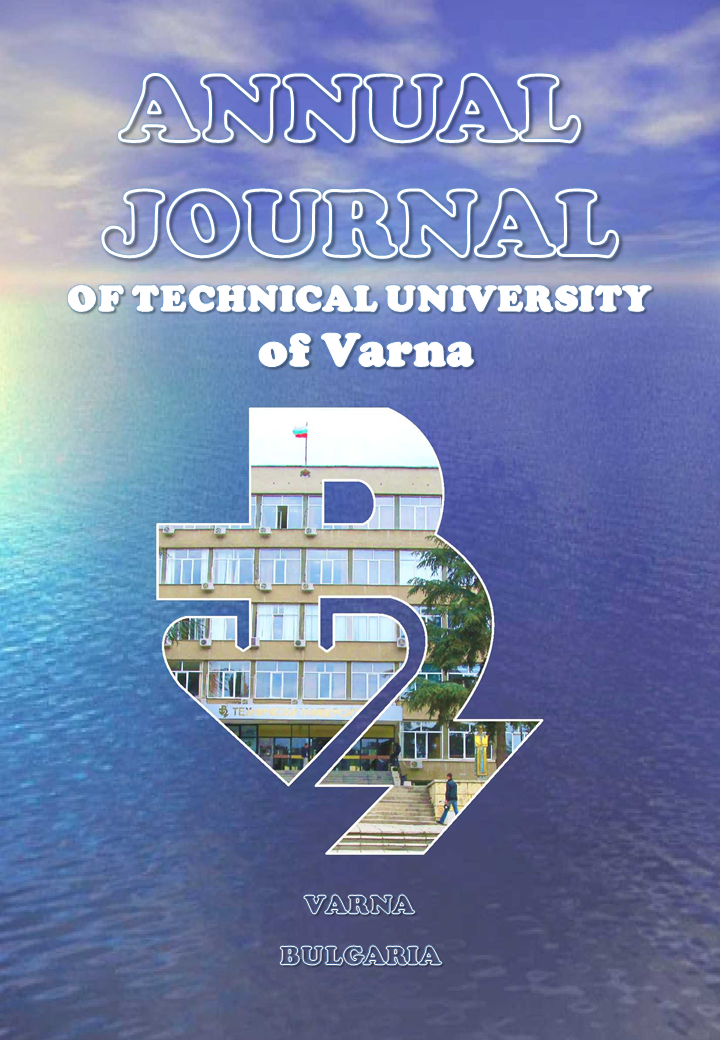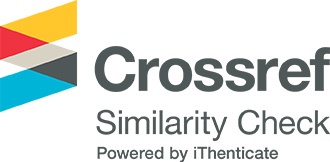Scaling in Quantitative Survey in Management Science Research: The Perspective of Likert Scale
##semicolon##
https://doi.org/10.29114/ajtuv.vol8.iss2.321##semicolon##
6-point likert scaling,##common.commaListSeparator## likert scale##common.commaListSeparator## scaling##common.commaListSeparator## survey research##common.commaListSeparator## management sciencesАбстракт
The research process entails the collection of data through questionnaire providing a ranking scale platform for measuring the respondents’ responses. Thus, this paper explores the topic of scaling in quantitative survey research in the field of management science, with a focus on Likert scaling. The paper delves into the types of scaling discussed in the literature, incorporating classical test theory as well as item response theory as guiding frameworks for its objectives. Employing a qualitative research approach, the paper allows for the use of contextual analysis through Qualitative Data Analysis (QDA). Presented is an overview of the various types of Likert scaling including 2-point, 3-point, 4-point, 5- point, 6-point, 7-point, 9-point, and beyond. The paper also argues that the 6-point Likert scale is the most appropriate scaling method for management science research as it divides the neutral option (mid-point) issue into parts of agreement and disagreement. The study recommends that management science researchers should familiarize themselves with the different types of Likert scale in order to determine the most appropriate for their studies. The paper suggests that the 6-point Likert scale is particularly relevant for studies within the management sciences field.
Изтегляния
##submission.citations##
<h2>References</h2>
<ul>
<li>Abdi, H. (2010). Guttman scaling. In N. Salkind (Ed.), <i>Encyclopedia of research design</i>. Sage.</li>
<li>Acharya, B. (2010). Questionnaire design. Central Department of Population Studies.</li>
<li>Alhassan, I., Asiamah, N., Opuni, F. F., & Alhassan, A. (2022). The Likert scale: Exploring the unknowns and their potential to mislead the world. <i>UDS International Journal of Development, 9</i>(2), 867–880. <a href="https://doi.org/10.47740/586.UDSIJD6i" target="_blank">Crossref</a></li>
<li>Andersson, B., & Xin, T. (2018). Large sample confidence intervals for item response theory reliability coefficients. <i>Educational and Psychological Measurement, 78</i>(1), 32–45. <a href="https://doi.org/10.1177/0013164417713570" target="_blank">Crossref</a></li>
<li>Armstrong, R. L. (1987). The midpoint on five-point Likert-type scale. <i>Perceptual and Motor Skills, 64</i>(2), 359–362. <a href="https://doi.org/10.2466/pms.1987.64.2.359" target="_blank">Crossref</a></li>
<li>Benidiktus, T., Rully, C. I. P., & Jeinne, M. (2022). Likert scale in social sciences research: Problems and difficulties. <i>FWU Journal of Social Sciences, 16</i>(4), 89–101. <a href="http://doi.org/10.51709/19951272/Winter2022/7" target="_blank">Crossref</a></li>
<li>Bourdel, N., Alves, J., Pickering, G., Ramilo, I., Roman, H., & Canis, M. (2015). Systematic review of endometriosis pain assessment: How to choose a scale? <i>Human Reproduction Update, 21</i>(1), 136–152.</li>
<li>Carifio, J., & Perla, R. (2007). Ten common misunderstandings, misconceptions, persistent myths, and urban legends about Likert scales and Likert response formats and their antidotes. <i>Journal of the Social Sciences, 3</i>(3), 106–116.</li>
<li>Carlson, M. A., Morris, S., Day, F., Dadich, A., Ryan, A., Fradgley, E. A., & Paul, C. (2021). Psychometric properties of leadership scales for health professionals: A systematic review. <i>Implement Science, 6</i>(1), 85. <a href="https://doi.org/10.1186/s13012-021-01141-z" target="_blank">Crossref</a></li>
<li>Choudhury, S., & Bhattacharjee, D. (2014). Optimal number of scale points in Likert-type scales for quantifying compulsive buying behaviour. <i>Asian Journal of Management Research, 4</i>(3), 432–440.</li>
<li>Chyung, S. Y., Roberts, K., Swanson, I., & Hankinson, A. (2017). Evidence-based survey design: The use of a midpoint on the Likert scale. <i>Performance Improvement, 56</i>(10), 15–23. <a href="https://doi.org/10.1002/pfi.21727" target="_blank">Crossref</a></li>
<li>Chyung, S. Y., Swanson, I., Roberts, K., & Hankinson, A. (2018). Evidence‐based survey design: The use of continuous rating scales in surveys. <i>Performance Improvement, 57</i>(5), 38–48. <a href="https://doi.org/10.1002/pfi.21763" target="_blank">Crossref</a></li>
<li>Corbetta, P. (2003). <i>Social research: Theory, methods and techniques</i>. Sage.</li>
<li>Croasmun, J. T., & Ostrom, L. (2011). Using Likert-type scales in the social sciences. <i>Journal of Adult Education, 40</i>(1), 19–22.</li>
<li>Diamantopoulos, A., Sarstedt, M., Fuchs, C., Wilczynski, P., & Kaiser, S. (2012). Guidelines for choosing between multi-item and single-item scales for construct measurement: A predictive validity perspective. <i>Journal of the Academy of Marketing Science, 40</i>(3), 434–449. <a href="https://doi.org/10.1007/s11747-011-0300-3" target="_blank">Crossref</a></li>
<li>Guy, R. F., & Norvell, M. (1977). The neutral point on a Likert scale. <i>The Journal of Psychology, 95</i>(2), 199–204. <a href="https://doi.org/10.1080/00223980.1977.9915880" target="_blank">Crossref</a></li>
<li>Hilbert, S., Küchenhoff, H., Sarubin, N., Nakagawa, T. T., & Bühner, M. (2016). The influence of the response format in a personality questionnaire: An analysis of a dichotomous, a Likert-type, and a visual analogue scale. <i>Testing, Psychometry, Methodology in Applied Psychology, 23</i>(1), 3–24. <a href="https://doi.org/10.4473/TPM23.1.1" target="_blank">Crossref</a></li>
</ul>
</body>
##submission.downloads##
Публикуван
##submission.howToCite##
Брой
Раздел (Секция)
##submission.license##
СПОРАЗУМЕНИЕ ЗА ПУБЛИКУВАНЕ
Годишника на Технически университет - Варна (ГТУВ) цели да гарантира, че постъпващите статии се публикуват, като същевременно се предоставя значителна свобода на публикуващите ги автори. За изпълнение на тази цел, ГТУВ поддържа гъвкава политика относно авторските права, което означава, че няма прехвърляне на авторски права от автора на издателя, а авторите запазват изключително авторско право върху интелектуалното си произведение.
При изпращане на статия, Отговорния автор трябва да се съгласи и приеме правилата и условията за публикуване, изложени в настоящото Споразумение за публикуване, които са както следва:
ПРЕДОСТАВЯНЕ НА ПРАВА ОТ ОТГОВОРНИЯ АВТОР
Отговорния автор предоставя на ГТУВ за времето на пълния срок на авторското право и всяко следващо удължаване или подновяване, следното:
• Неотменимо, неизключително право да публикува, възпроизвежда, предоставя, разпространява или по друг начин използва предоставената работа в електронни и печатни издания и в производни произведения в целия свят, на всички езици и във всички известни съществуващи или в последствие възникнали медии.
• Неотменимо, неизключително право да създава и съхранява електронни архивни копия на работата, включително правото да депозира предоставената работа в дигитални хранилища с отворен достъп.
• Неотменимо, неизключително право на лицензиране на други лица да възпроизвеждат, превеждат, преиздават, предоставят и разпространяват предоставената работа при условие, че авторите са надлежно идентифицирани (за момента това се извършва чрез публикуване на произведението под лиценз Creative Commons Attribution 4.0 Unported).
С предоставянето на работата за публикуване, авторските права върху материала остават на авторите. Авторите запазват всички патентни, търговски марки и/или други права върху интелектуалната си собственост.
ЗАДЪЛЖЕНИЯ НА ОТГОВОРНИЯ АВТОР И СЪАВТОРИТЕ
При последващо разпространение или повторно публикуване на предоставената работа, Отговорния автор се съгласява да идентифицира ГТУВ, в който е публикувано произведението като първоначален източник на първото публикуване на работата. Отговорния автор гарантира, че съавторите също ще посочват ГТУВ като източник на първото публикуване, когато разпространяват, преиздават или се позовават на настоящата работа в бъдещи свои публикации.
ГАРАНЦИИ ОТ СТРАНА НА ОТГОВОРНИЯ АВТОР
Отговорния автор гарантира че предоставената за публикуване работа не нарушава никои действащи нормативни разпоредби или законни права на която и да е трета страна. Същия гарантира че работата не съдържа какъвто и да е материал, който може да се възприеме от читателската аудитория като неетичен, компрометиращ, нехуманен, расистки, клеветнически и/или нарушаващ авторски и/или имуществени права, права на интелектуална собственост или поети ангажименти за поверителност към трети страни. Отговорния автор гарантира че предоставеният материал е с оригинално съдържание, не е официално публикуван в никое друго издателство, както и че не е в процес на публикуване пред други издателства. Отговорния автор също така гарантира че притежава съответните правомощия да сключи настоящото споразумение. Ако предоставяната работа е подготвена съвместно с други съавтори, Отговорния автор гарантира че всички останали съавтори са информирани и са съгласни предоставения материал да бъде публикуван в ГТУВ.
Отговорния автор лично (или от името на авторския колектив) дава съгласието си да не въвлича по никакъв начин ГТУВ като страна в каквито и да било научни, академични, административни и/или съдебни спорове, в случаите на установени нарушения на горепосочените декларации и гаранции.
ПРАВА И ЗАДЪЛЖЕНИЯ НА ГТУВ
ГТУВ се съгласява да публикува предоставения материал, в случаите когато същия отговаря напълно на всички необходими качествени, технически и редакционни изисквания, като го идентифицира еднозначно с авторите му. В следствие на настоящото споразумение, на ГТУВ се предоставя правомощие да упражнява права при необходимост от името на авторите върху трети лица, като например в случаите на установено плагиатство, нарушаване на авторски права и др.
Декларация за поверителност на лични данни
Вашите имена и имейл адреси, въведени в уебсайта на ГТУВ, ще бъдат използвани само и изключително за обявените цели на настоящото списание и няма да бъдат използвани за никакви други цели от издателя или предоставяни на друга - трета страна.
Издателят се задължава да извърши всички необходими действия, цялата предоставена лична информация да остане конфиденциална, в рамките на издателя и да не бъде споделена с външни обекти или субекти, освен ако не е дадено предварително изрично разрешение от собственика на личните данни.
Вашата лична информация няма да бъде обект на продажба, разпространение или публикуване по какъвто и да е начин и под каквато и да е форма.









